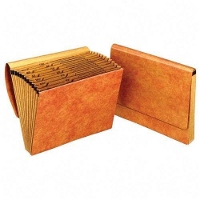A reader writes: “Any plans to do a blog on receipts and how to organize them? We have a decorative box we put them all in. We are proud that they are all in one spot, but beyond that, we haven’t come up with a system.”
 If there’s no system in place, keeping track of receipts can sometimes feel like herding cats. (Full disclosure: I’ve never attempted to herd cats, but I can imagine what it could be like). There are many schools of thought about receipts: which ones should be saved and which ones should be shredded, and whether they should be stored in your wallet, wherever you last left them, in a pile on the kitchen table (shudder!), or elsewhere. Your version of organizational bliss will help you decide which route to take. The following tips resonate with organizational bliss in our house, and perhaps they’ll be helpful to some of our readers:
If there’s no system in place, keeping track of receipts can sometimes feel like herding cats. (Full disclosure: I’ve never attempted to herd cats, but I can imagine what it could be like). There are many schools of thought about receipts: which ones should be saved and which ones should be shredded, and whether they should be stored in your wallet, wherever you last left them, in a pile on the kitchen table (shudder!), or elsewhere. Your version of organizational bliss will help you decide which route to take. The following tips resonate with organizational bliss in our house, and perhaps they’ll be helpful to some of our readers:
- Obtain a month-by-month accordion file from an office supply store. Unfortunately, these are usually a less than attractive brown hue…but they do the job and look quite official.
- Store your accordion file in an easily accessible place in your home office, as you will use it on a regular basis (hint, hint).
- File your receipts by month. Every time you return home from a store, ATM, or anywhere else a receipt was given to you, place your receipts into your accordion file. Do not leave them in piles or keep them hanging around your wallet. Consider this the same as passing go and collecting $200 in the wonderful world of Monopoly.
- If you expect you’ll need to reference a specific receipt or two (i.e. you may want to return some items and will need these receipts), clip the receipts together and place them at the front of the accordion file section in which they’re stored.
- In early January during your annual file fling, empty your receipts accordion file into a thick single file or envelope of your choosing. Compress it as much as possible and store it wherever you keep your tax documents.
- Then put the empty month-by-month accordion file back in its spot in your home office, and start all over again with collecting receipts in it.
Storing your receipts by month is helpful because it enables you to find proofs of purchases with ease. In June, I was charged $25 for a transaction and I paid for it in-person, using my credit card. In August, I received a $25 bill in the mail from the purveyor who’d already charged my credit card in June. This was easily resolved. I knew the month in which I’d paid for this charge so I simply went into my accordion file, found the receipt, and submitted the proof of purchase. The purveyor immediately withdrew their bill.
I’d venture to say that in this situation, rounding up my receipts saved me time and money. I didn’t just blindly pay a bill (that I’d already paid!). And I didn’t have to sift through electronic or hard copy credit card statements or navigate the automated prompt maze that is my credit card company’s customer service center to request proof that I had already made this payment.
Identify the receipt keeping and storage philosophy that works well for you, and carry it out to the fullest. You can start whenever you’d like: today, tomorrow, next month, on January 1…whenever you are so inspired. When you find the system that works for you, tell us about it and your insights could inspire other Logistically Leah readers in the future!



